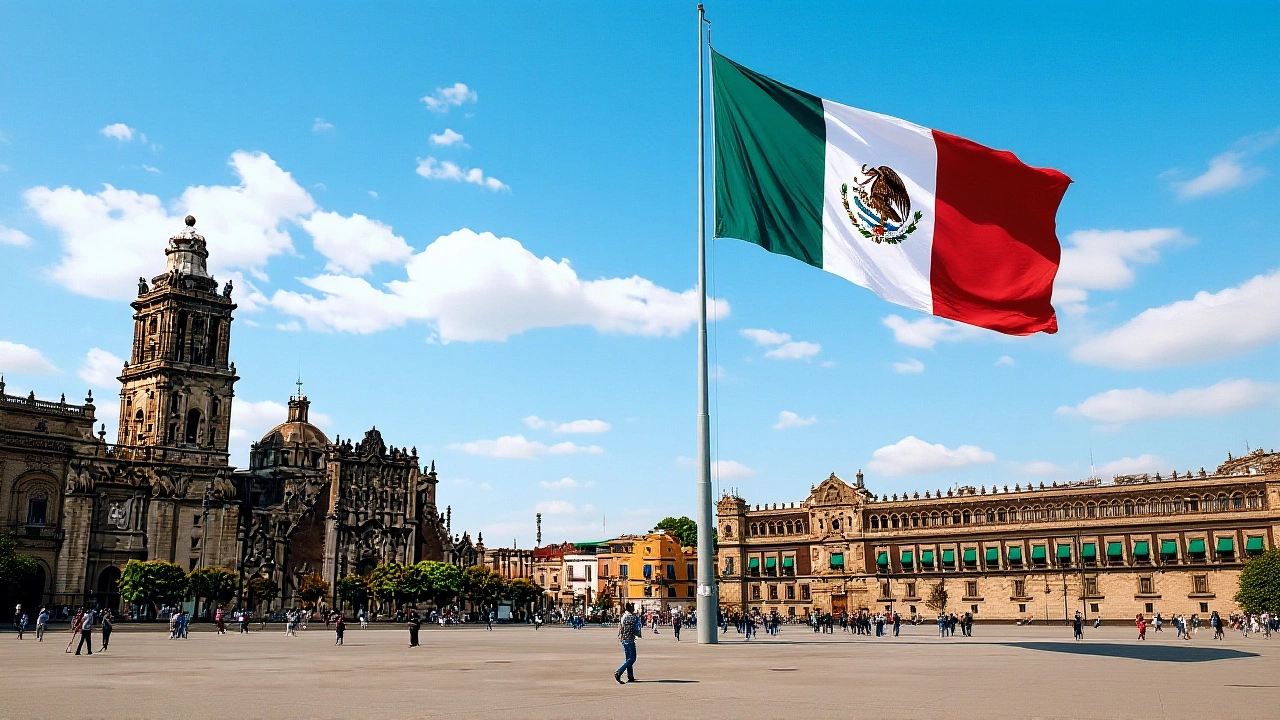
Across the rolling grasslands of Paraguay, the dense forests of Bolivia, and the vast savannas of Colombia’s Meta department, a quiet revolution is unfolding — not with protests or politics, but with tractors, soybeans, and Low German hymns. Mennonite Central Committee (MCC) workers, descendants of 16th-century Anabaptists, have spent nearly a century building self-sufficient farming communities across Latin America. Today, roughly 100,000 Mennonites live in Mexico, 40,000 in Paraguay, and growing numbers in Colombia, Bolivia, and Peru — each group clinging to faith, language, and simplicity while reshaping regional economies. Their arrival wasn’t about conquest. It was survival. And now, decades later, their success is testing the very peace they came to protect.
A Century of Flight, A Legacy of Farming
The Mennonites didn’t choose Latin America. It chose them. Fleeing persecution in Canada and the U.S. after World War I, and later escaping Soviet collectivization in Ukraine, these communities sought religious freedom — not wealth. In the 1920s, families arrived in Paraguay’s Chaco region with little more than Bibles, hand plows, and a belief that God had led them to a barren land where they could live without conscription or state interference. "The struggle to survive in that extreme environment was a huge test of their faith and perseverance," said pastors Victor Wall and Dario Ramirez during a recent celebration in Paraguay. "We arrived with nothing. We stayed because we had each other — and God." That humility became the foundation of their success. In the Chaco, once considered uninhabitable, Mennonites turned dry scrubland into one of the world’s most productive beef regions. Today, Paraguay exports more beef than any country in South America outside Brazil — and Mennonite colonies account for nearly a third of that output. Their farms use rotational grazing, minimal chemicals, and family labor — principles rooted in stewardship, not profit. But here’s the twist: their environmental model is now under fire. Satellite data shows over 1.2 million hectares of Chaco forest have vanished since 1990 — much of it cleared for cattle pasture. "They built a miracle," says environmental researcher Lucia Mendez in Asunción. "But miracles have shadows."From Refuge to Reality: Colonies in Colombia, Bolivia, and Peru
By the 1950s, pressure from land-hungry neighbors pushed some Mennonites southward. In Colombia, they settled in Puerto Gaitán and Vichada, acquiring tens of thousands of acres to grow corn, soy, and raise cattle. Local workers — many from displaced indigenous groups — now make up 60% of their labor force. Wages are higher than regional averages. Schools, clinics, and roads built by Mennonites have improved life for nearby towns. Yet, some locals whisper: "They own everything. We work for them." In Bolivia, the Iglesia Evangélica Menonita Boliviana (IEMB) was formally founded on February 16, 1975. Its roots trace back to MCC missionaries like Beatriz Barrios from Uruguay and Steven "Tig" Intagliata from Ohio, who lived in mud huts, taught literacy, and baptized converts in rivers. By 2025, the church will mark its 50th anniversary in Los Tajibos, Santa Cruz, with nearly 700 members from 15 congregations gathering to sing in Plautdietsch and share stories of survival. "We didn’t come to change Bolivia," says Elder Jacob Reimer, one of the founding elders. "We came to live. But God changed us — and maybe, just maybe, we changed this land too." Then there’s Peru. Here, the story turns darker. In the last decade, five Mennonite colonies have sprung up in the Amazon near the Brazilian border — areas long inhabited by indigenous groups like the Yaminahua and Asháninka. Reports from RFI and France 24 describe tense standoffs. In one incident, Mennonite settlers allegedly burned down a local rice farm after a land dispute. "Daniel Braun and others fled across rice paddies, some of their barns ablaze behind them," the reports state. Indigenous leaders say the Mennonites arrived with legal titles from distant bureaucrats — titles that ignore ancestral claims. "They call it farming," says indigenous activist Rosa Quispe. "We call it theft dressed in faith."
Peace, Profit, and the Paradox of Isolation
Mennonites practice diakonia — selfless service. In Paraguay, they run free clinics. In Bolivia, they train nurses. In Colombia, they fund community libraries. Their schools teach math and science, but also forbid television and internet. They speak Low German at home, Spanish at work, and pray in both. They’re not trying to assimilate. But they’re not resisting either. They’re adapting — quietly, stubbornly, successfully. Yet their success is unraveling their original dream. "We came for solitude," says 72-year-old farmer Jacob Yoder in Paraguay’s Chaco. "Now, highways run through our fields. Truckers honk at our ox-carts. Developers knock on our doors. We didn’t ask for this." The MCC, which still supports 120 projects across Latin America, now faces an internal reckoning. "We taught them to farm well," says MCC director Miriam Hershberger. "But we never taught them how to say no to growth."
What Comes Next?
In 2025, as the IEMB celebrates its 50th anniversary, the world will watch. Will Mennonites double down on isolation? Or will they begin to engage with indigenous land rights, environmental regulations, and national politics? Some younger Mennonites are already asking questions. A 24-year-old woman in Santa Cruz told me: "I love our church. But I don’t want my children to inherit a forest that’s gone." Meanwhile, governments are taking notice. Colombia’s agriculture ministry is drafting new rules for foreign land ownership. Bolivia’s indigenous rights commission has opened investigations into three Mennonite colonies. And in Peru, a court case over land titles in the Amazon is set to begin this fall. The Mennonites didn’t set out to be controversial. They came to live quietly. But in a world that demands growth, silence isn’t always enough.Frequently Asked Questions
Why do Mennonites speak Low German instead of Spanish?
Mennonites preserve Low German, or Plautdietsch, as a cultural and religious barrier against assimilation. Originating in northern Germany and the Netherlands in the 16th century, the dialect connects them to their Anabaptist roots. Children learn Spanish for business and legal matters, but home, church, and school instruction remain in Plautdietsch — reinforcing identity across generations.
How do Mennonites justify large-scale farming in ecologically sensitive areas?
Many Mennonites believe they’re practicing "stewardship" — using land responsibly without exploitation. They avoid chemical fertilizers, rotate crops, and limit herd sizes. But critics argue their sheer scale — often thousands of hectares per colony — overwhelms local ecosystems. In Paraguay’s Chaco, their model helped turn the region into a beef powerhouse, but also contributed to the loss of 1.2 million hectares of forest since 1990.
What role does the Mennonite Central Committee play in Latin America today?
The Mennonite Central Committee provides logistical, financial, and spiritual support to Mennonite communities across Latin America. It funds schools, health clinics, and agricultural training, and mediates land disputes. While no longer directly managing colonies, it still influences their values — promoting peace, simplicity, and service — even as younger members question whether those values can survive in a globalized economy.
Are Mennonites considered indigenous in Latin America?
No. Mennonites are a religious and ethnic minority with European roots, not indigenous peoples. While they’ve lived in Latin America for generations, their identity is tied to Anabaptist theology and Germanic language, not native heritage. This distinction fuels tensions, especially in Peru and Bolivia, where indigenous groups view Mennonite land acquisitions as colonial-style encroachment — even if the Mennonites themselves see themselves as victims of historical persecution.
What’s the future of Mennonite communities in Latin America?
The future is uncertain. Younger Mennonites are more educated, more connected, and more questioning. Some are leaving the colonies for cities. Others are pushing for environmental reforms within their communities. But without the strict isolation that defined their ancestors, the risk of cultural erosion grows. Their survival may depend not on retreat, but on dialogue — with governments, indigenous neighbors, and even environmentalists.
Why is the 50th anniversary of the IEMB in Bolivia significant?
The Iglesia Evangélica Menonita Boliviana’s 50th anniversary in 2025 marks the transition from missionary outpost to fully Latin American church. Unlike earlier colonies, which were isolated German-speaking enclaves, the IEMB now has Spanish-speaking leadership, indigenous converts, and local governance. It’s a symbol that Mennonitism can take root far from its European origins — and that faith, when rooted in service, can outlast even the most hostile environments.


